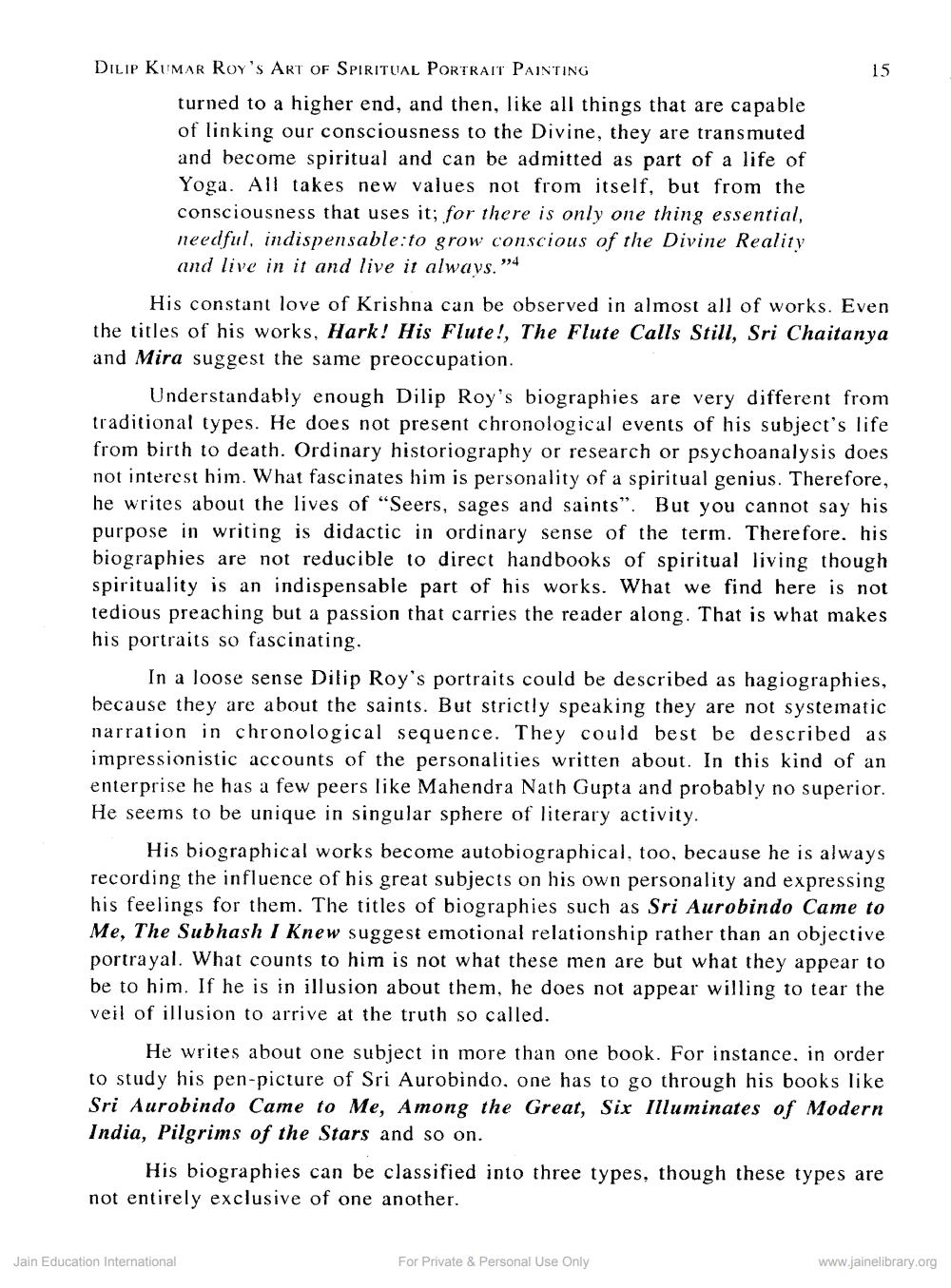________________
DILIP KUMAR Roy's ART OF SPIRITUAL PORTRAIT PAINTING
15 turned to a higher end, and then, like all things that are capable of linking our consciousness to the Divine, they are transmuted and become spiritual and can be admitted as part of a life of Yoga. All takes new values not from itself, but from the consciousness that uses it; for there is only one thing essential, needful, indispensable: to grow conscious of the Divine Reality
and live in it and live it always. "4
His constant love of Krishna can be observed in almost all of works. Even the titles of his works, Hark! His Flute!, The Flute Calls Still, Sri Chaitanya and Mira suggest the same preoccupation.
Understandably enough Dilip Roy's biographies are very different from traditional types. He does not present chronological events of his subject's life from birth to death. Ordinary historiography or research or psychoanalysis does not interest him. What fascinates him is personality of a spiritual genius. Therefore, he writes about the lives of “Seers, sages and saints". But you cannot say his purpose in writing is didactic in ordinary sense of the term. Therefore, his biographies are not reducible to direct handbooks of spiritual living though spirituality is an indispensable part of his works. What we find here is not tedious preaching but a passion that carries the reader along. That is what makes his portraits so fascinating.
In a loose sense Dilip Roy's portraits could be described as hagiographies, because they are about the saints. But strictly speaking they are not systematic narration in chronological sequence. They could best be described as impressionistic accounts of the personalities written about. In this kind of an enterprise he has a few peers like Mahendra Nath Gupta and probably no superior. He seems to be unique in singular sphere of literary activity.
His biographical works become autobiographical, too, because he is always recording the influence of his great subjects on his own personality and expressing his feelings for them. The titles of biographies such as Sri Aurobindo Came to Me, The Subhash I Knew suggest emotional relationship rather than an objective portrayal. What counts to him is not what these men are but what they appear to be to him. If he is in illusion about them, he does not appear willing to tear the veil of illusion to arrive at the truth so called.
He writes about one subject in more than one book. For instance, in order to study his pen-picture of Sri Aurobindo, one has to go through his books like Sri Aurobindo Came to Me, Among the Great, Sir Illuminates of Modern India, Pilgrims of the Stars and so on.
His biographies can be classified into three types, though these types are not entirely exclusive of one another.
Jain Education International
For Private & Personal Use Only
www.jainelibrary.org




